Are you a bit of a master chef in the kitchen? Maybe you’re just experimenting (with varying degrees of success). Whatever your ability, it helps to know your fan oven’s symbols and settings.
In this guide, we'll cover the meaning behind the most common oven symbols and settings. We should mention that there’s no standard set of oven symbols. But generally they look similar across different brands and models. Remember, always refer to your oven's manual to find out the exact meaning for your oven’s settings and symbols.
For insights on how to use your oven effectively, check out our guide on how to use an oven.
Common fan oven symbols
If you’re a fan of the fan oven, you’re in the right place. This section covers the main settings you’ll see when exploring your oven’s heating abilities.
Fan oven
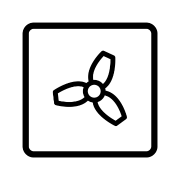
Let’s start with the main one – the fan oven symbol. As you might expect, it’s represented by a fan, usually inside a circle. This is also known as the convection setting. In other words, the fan circulates hot air evenly throughout the oven’s cavity. By doing this, it means you have a consistent cooking temperature, without any hot spots.
Different oven brands have their own term for this setting. For instance, Zanussi has the True Fan while NEFF has the CircoTherm. But they all do the same thing – that is, provide even heat distribution.
Fan and grill
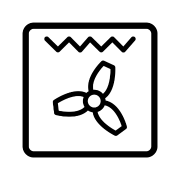
The fan and grill symbol combines a fan icon with a jagged line above it, symbolising the grill element. This setting uses the fan's hot air circulation and the grill element's direct heat at the same time. It’s ideal for getting that perfectly cooked pie, with a nice golden finish on top.
Fan with bottom heat
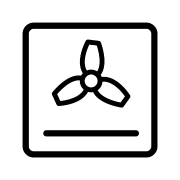
The fan with bottom heat symbol features a fan icon with a straight line at the bottom. The line represents the heating element in the oven's base. This setting circulates hot air while providing concentrated heat from below. So it’s ideal for getting crispy bases on pizzas and pastries.
Roasting and grilling symbols
From cooking a Sunday roast to the perfect grilled cheese sandwich. Your oven is able to handle culinary creations big and small. Whatever you're making, understanding your oven's roasting and grilling settings is important if you want to get the best results.
Full surface grill
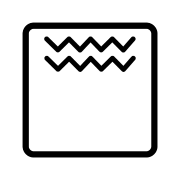
The full surface grill symbol is made up of one or two jagged lines across the top of a square. This represents the grill element covering the roof of the oven cavity. You can use this setting for consistent, all-over grilling. It’s great for even browning and caramelisation of dishes like lasagne, shepherd’s pie or just a quick round of toast.
Centre grill
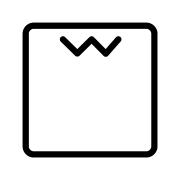
At a glance, the centre grill symbol looks like the full surface grill symbol. It shows jagged lines at the top of a square. Except this time, they’re at the top in the centre of the square. The jagged lines represent the central part of the grill element. This setting focuses heat on the centre of the oven. So it’s perfect for grilling smaller portions or for achieving precise browning on dishes like steaks or fish fillets.
Grill with bottom heat
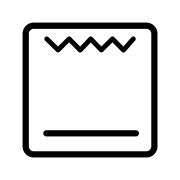
The grill with bottom heat symbol features a jagged line at the top, representing the grill element. There’s also a straight line at the bottom, representing the heating element. This setting combines the direct heat from the grill with heat from the bottom. You might use it for something like a casserole. It’s ideal for crispy toppings or browning your dish, while making sure there’s constant heat from below.
Top and bottom heat

The top and bottom heat symbol is typically made up of two horizontal lines – one at the top and one at the bottom. These represent the heating elements. Both heating elements are used at the same time. So it’s good for things like baking cakes and bread. The direct heat from above and below helps achieve even browning and consistent cooking.
Bottom heat

The bottom heat symbol usually shows a straight line at the base of the square – representing the bottom heating element. As heat only comes from the bottom, it’s perfect for baking things like pastry crusts. Or for making sure your bread or pizza dough is thoroughly baked from below.
Other cooking symbols
Your oven is more than just an appliance for cooking pizzas and baking cakes. It could be capable of things you weren’t even aware of…
Slow cooking
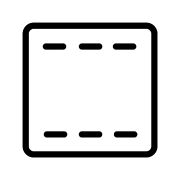
The slow cook symbol usually shows a broken line running along the top and bottom of a square. This represents the extended cooking time at a lower temperature. Gentle, consistent heat over a longer period makes it perfect for tenderising tough cuts of meat. Or for developing rich flavours in hearty stews.
Preheating

The preheating symbol on a fan oven often shows some stacked plates. It might also show a thermometer, or a line with waves (indicating the heating process). This setting means the oven is in the process of reaching the right temperature before cooking can start.
Reheating
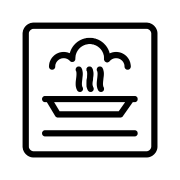
The reheating symbol on a fan oven often features a plate with steam (indicating the reheating process). This setting lets you keep food warm without overheating it.
Defrosting
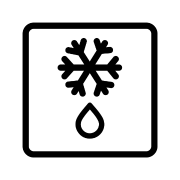
The defrosting symbol on a fan oven usually features a snowflake or fan oven with a water droplet. This represents the defrosting process. It uses low temperatures and airflow to thaw frozen foods. So it minimises the risk of bacterial growth.
Cleaning and safety symbols
Of course after the cooking (and eating) comes the dreaded clean-up. Don’t worry, we’ve got some tips on how to clean your oven to help cut down on the elbow grease.
These days, some fan ovens also come equipped with self-cleaning systems to really save on time and effort. One of the main ones is something called ‘pyrolytic cleaning’.
Pyrolytic cleaning
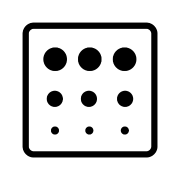
The pyrolytic cleaning symbol often looks like three sets of three arrows or dots. Some big brands have their own name for these systems – Siemens' activeClean, for example. During pyrolytic cleaning, the oven can reach temperatures of around 500 degrees Celsius. That’s hot enough to incinerate any residue to ash. Once cooled, it's easy to wipe clean, leaving your oven spotless.
Child lock
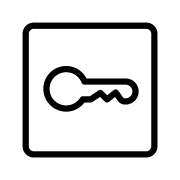
The child lock symbol often resembles a key. It's a helpful safety feature designed to prevent accidental changes to oven settings.
Alarm
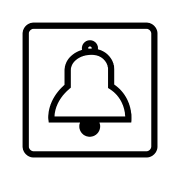
The alarm symbol is usually a bell. It indicates an alarm that goes off when the cooking process is finished. Unlike the minute minder, which is a timer, the alarm signals the end of a cooking cycle – prompting you to check on your (hopefully perfectly cooked) dish.
Minute minder
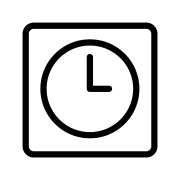
The minute minder symbol typically resembles a clock or timer. It lets you set a specific duration for cooking or baking. Once the time’s up, the oven lets out an alert sound.
What to do if your oven displays an error code
Some ovens with digital displays might show an error code. For instance, an ‘F1’ error code indicates that there’s a fault with the oven's electronic control board. While an ‘F3’ code means there’s a problem with the temperature sensor.
If your oven isn’t working the way it should, you can always book a professional repair.
Our blog is loaded with more related articles

Oven tips
Electric or gas oven: the key differences
Find out the differences between electric and gas ovens, including their cooking performance, energy efficiency, maintenance re...
Read more

Oven tips
How to clean your hobs
Find out the best way to clean your gas, induction, or ceramic hobs, including what products to use and how to avoid damaging t...
Read more
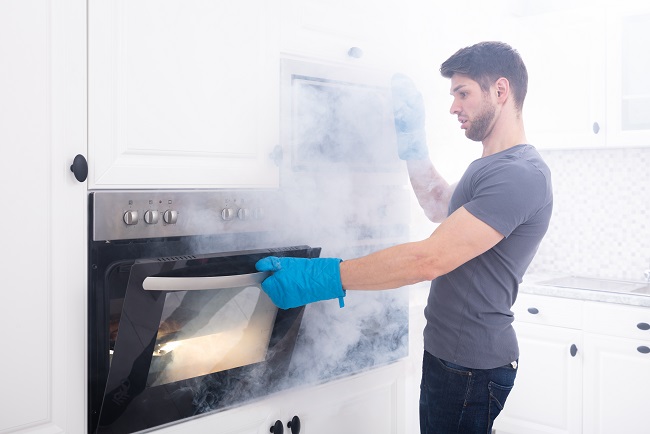
Oven tips
What to do if your oven is smoking
If your oven is smoking when you use it, find out what practical steps you can take to address the issue, along with tips for p...
Read more
